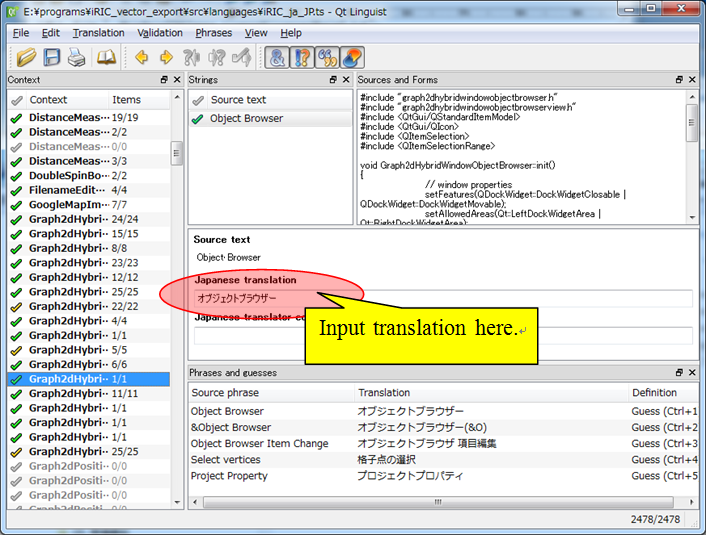Internationalization¶
Overview¶
iRIC GUI source codes are all written in English, but intended to be used worldwide, so internationalization is important.
- When developing GUI dialogs, you’ll have to care nothing. Qt automatically do the needed things for internationalization.
- When adding some sentences inside
*.cppfiles, that should be translated in other languages, use tr() to inform that the sentence should be translated, like the following
QMessageBox::warning(this, tr("Warning"), tr("File open error"));
Note that if you want to do the internationalization, that class should be a subclass
of QObject class, and has Q_OBJECT macro in the header file.
Preparing internationalization dictionary¶
When some new sentences to be translated are added, you have to prepare updated internationalization dictionary, by the following procesure:
- Open Command prompt for Qt, go to the
srcfolder, and input the following command.
lupdate src.pro
This command will update languages/*.ts files.
- Launch Linguist (bundled with Qt), open the dictionary file, and edit the translated sentences.

Figure 5 Linguist interface example
- Open Command prompt for Qt, go to the
toolsfolder, and input the following command.
python lrelease.py
Note that you need Python 3 installed to run this script.
How to add new language to support¶
When you want to add a new language to support, you can do it by adding a single line
in the project files *.pro. Currently, the setting is as follows, for example:
TRANSLATIONS += \
languages/iRIC_ja_JP.ts \
languages/iRIC_ko_KR.ts \
languages/iRIC_id_ID.ts \
languages/iRIC_th_TH.ts \
languages/iRIC_zh_CN.ts \
languages/iRIC_vi_VN.ts \
languages/iRIC_fr_FR.ts \
languages/iRIC_es_ES.ts \
languages/iRIC_ru_RU.ts
Please note that you have to add line to all the project files inside iRIC GUI repository.